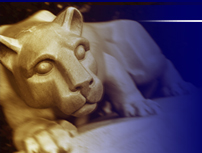America before Colonization
Diverse groups of people lived in America for many centuries before they encountered European explorers. Native societies were centered around the spoken word rather than written documents. The stories and traditions that formed their heritage were passed down orally, so that we do not have detailed written records. Scholars like Catherine Albanese have pieced together the major components of their religions by interviewing contemporary practitioners of Indian traditions, examining reports from European explorers and colonists who visited Indian societies, and exploring archeological evidence.
By the time European colonists arrived in the 1600s, Indian societies had spread throughout North and South America and had developed different cultures and languages. Over 500 languages (some as different from each other as English and Japanese!) had evolved. Albanese focuses much of her opening chapter on the Algonkian, the groups of Indians that lived in southern New England and the Great Lakes region. Obviously, these separate communities of Indians developed their own religious views. Most of them, however, shared a number of common characteristics.
When the Indians looked at the world around them, they saw life and spirit. They did not draw distinctions between themselves and the animals, or the plants, or even the rocks. Nothing was “dead” to them, nothing was inert, nothing “didn’t matter.” Animals, plants, rocks, and streams all had sprits. They had sacred meaning. Each type of creature had guardian spirits that the Algonkian Indians called “Manitou.” Bears, wolves, beaver, hawks—all had a sort of group consciousness, a spirit, a Manitou.
The Indians were in a perpetual relationship with the Manitou around them. Indians did not structure their societies in ways that gave them total control and order in their existence. They did not “stock up” on food and supplies to trade later. Instead, they lived in faith that the nature around them would always provide plentiful food and shelter. For the most part, it did. Because they were not trying to make a profit, the Indians only killed or harvested the animals and plants that they needed for their immediate survival. This meant that they rarely over-hunted or over-farmed the land around them, and food remained plentiful.
Indians did not take this bounty for granted. They continually expressed their gratitude and respect for nature and the Manitou. When they killed a moose, for example, the Indians would thank the moose and its Manitou for sacrificing itself for them. They believed that the animals chose to die in order to feed the Indians and help them live. This view of animals gave the creatures tremendous dignity; their fall in the hunt became a noble gesture of generosity.
If the Indians ever had great difficulty finding food, they would suppose that the Manitou were angry with them. This led to the creation of many ceremonies and rituals that the Indians would perform in order to honor nature and the Manitou spirits…and plead with them to again provide food. The beavers were particularly sacred animals for the Algonkian, providing much of their livelihood. When the European traders began to over-hunt the beavers, seeking to profit from their furs, the animals became scarce. In the Indian world-view, this became a spiritual crisis. Unable to find enough beavers to sustain themselves, Indians supposed that the beaver’s Manitou had forsaken them. Beavers were no longer willing to help them. One historian, Calvin Martin, has proposed that, in a cruel irony, the Indians declared war on the disloyal beaver, and began to overhunt the animals themselves, trading them to the Europeans and perpetuating the shortage of beavers.
